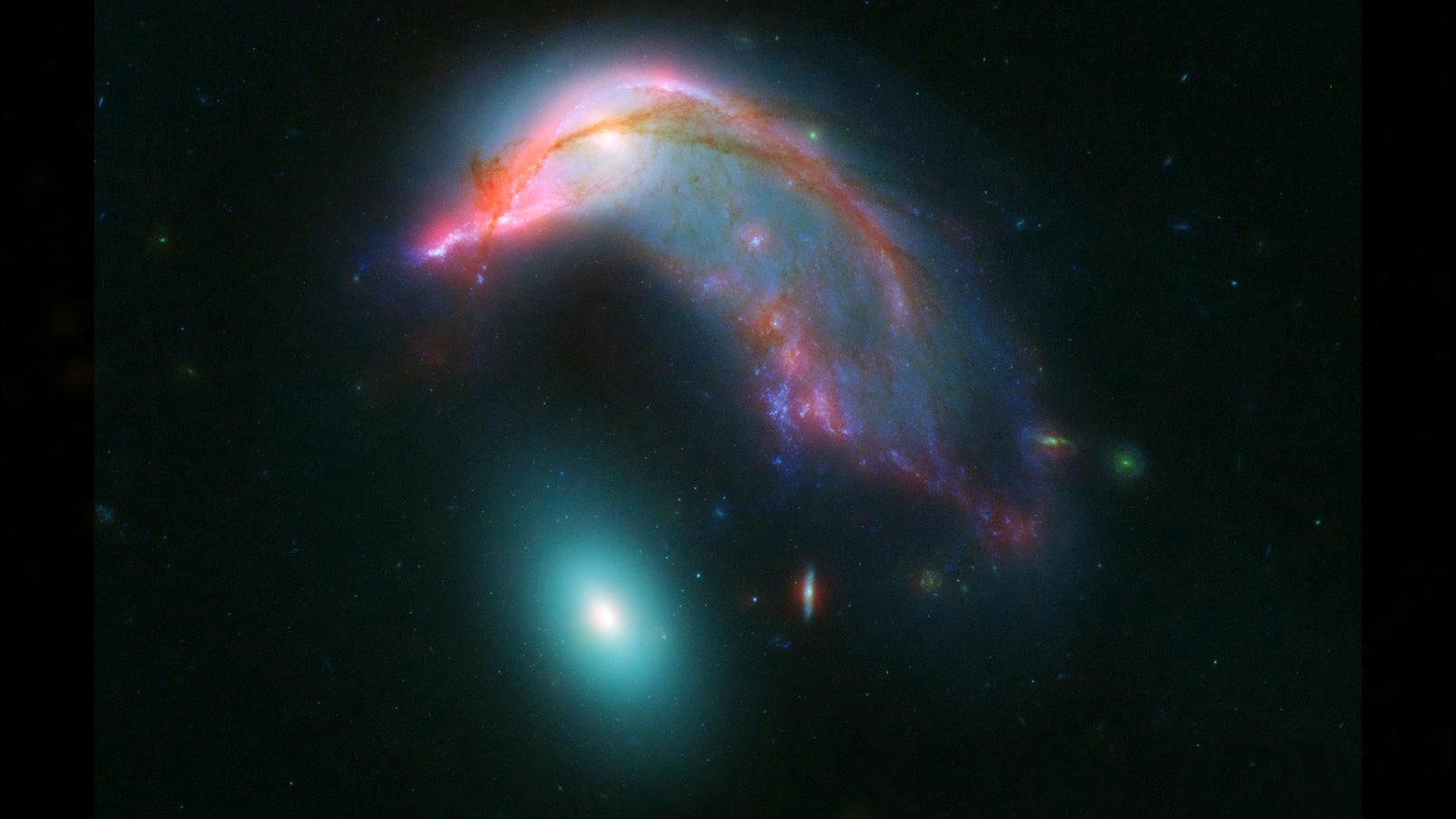


A Hubble image from 2018 recently got under the spotlight. And no wonder, as it incredibly resembles to a penguin guarding an egg. This image shows distant interacting galaxies, known collectively as Arp 142. To present us with this image, NASA combined details from Spitzer and Hubble space telescopes to show these galaxies in light spanning the visible and infrared parts of the spectrum.
“The penguin and the egg” galaxies
Unlike actual penguins’ natural habitat, this “penguin” and its “egg” are much further from us. Located about 23 million light-years away, they’re roughly 10 times farther than our closest major galactic neighbor, the Andromeda galaxy. The blue streak at the top of the image is an unrelated background galaxy even farther away than the Arp 142.
These two galaxies, which are attracted to each other due to their mutual gravitational pull, are quite different in appearance. The “penguin” or NGC 2936, was once a typical spiral galaxy with symmetric spiral arms and a flat shape. It was rich in newly-formed hot stars, visible as blue filaments in Hubble images. However, the galaxy’s shape has been distorted and twisted as a result of the gravitational forces exerted by its neighboring galaxy. The second galaxy’s gas mixed with dust can be seen as red filaments in Spitzer’s infrared images.
But the “egg” or NGC 2937 seems to be almost featureless, according to NASA. The greenish hue of the starlight indicates that it is host to a much older population of stars. The absence of any conspicuous red dust features implies that it has already depleted its reserve of gas and dust, which are necessary for creating new stars. Even though this galaxy is being influenced by its neighboring galaxy, the even distribution of its stars makes it difficult to detect any obvious distortions in its shape.


“Eventually these two galaxies will merge to form a single object, with their two populations of stars, gas and dust intermingling,” NASA writes. “This kind of merger was likely a significant step in the history of most large galaxies we see around us in the nearby universe, including our own Milky Way.”
Other fun galaxies
Other than the “penguin and the egg,” NASA has also shared other interesting space photos over the years. One of the most recent ones shows NGC 2264, a cluster of young stars nicknamed the “Christmas Tree Cluster.” NASA also celebrated another holiday, Halloween, with a stellar image: it was a spoooookyBat nebula. Speaking of celebration, we also had a chance to see “stellar fireworks.” And to stay in this festice mood, let’s have some fun at this space merry-go-round.
In case you’re not seeing the penguin and the egg, NASA even drew them for you on Instagram so you can find them more easily. Although I personally don’t think it’s necessary, they’re quite obvious. Would you agree?
[via My Modern Met]






